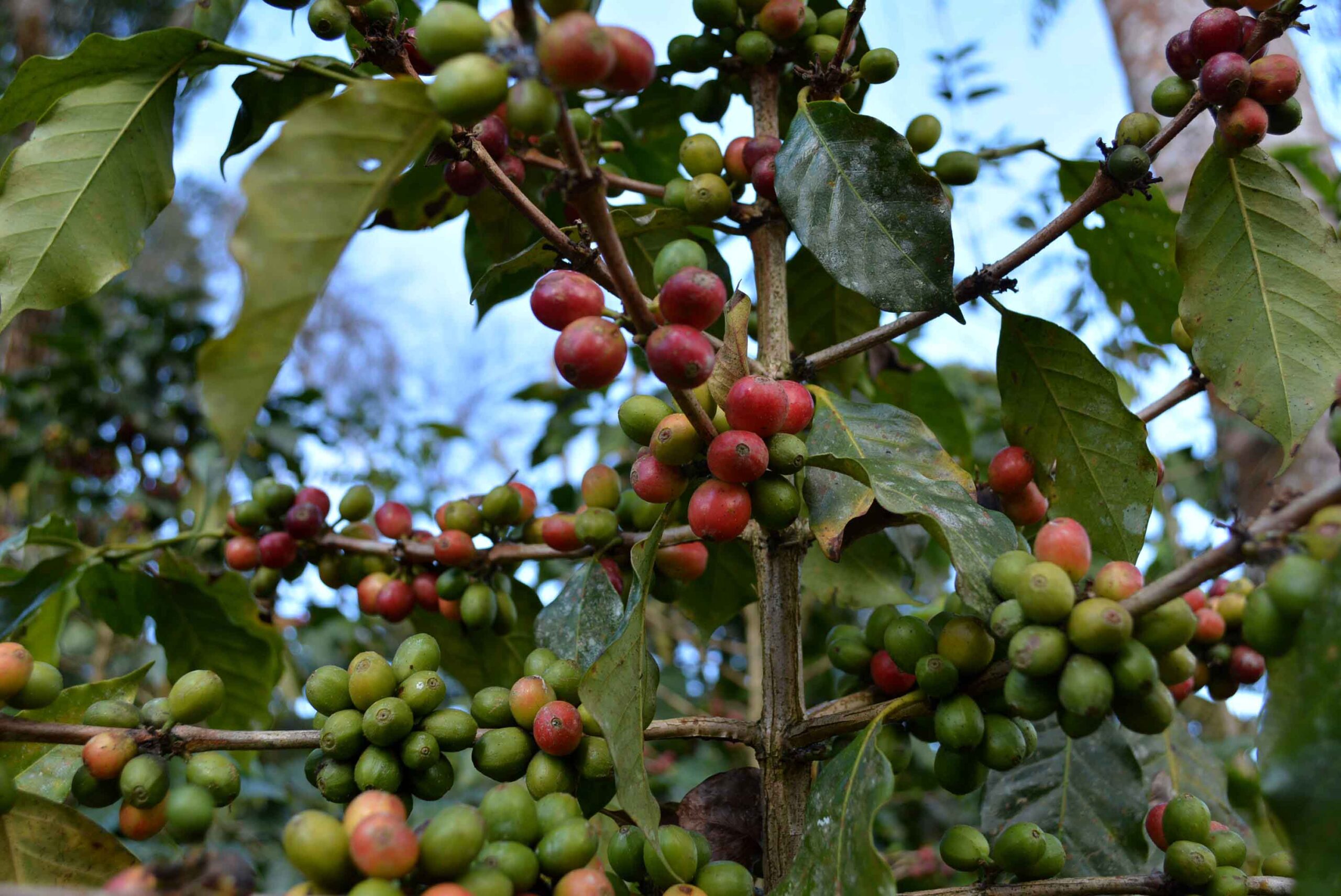Yesterday, we cupped some coffee samples that we had been awaiting in order to make our final decisions as to which coffees to import to the US this year. For those who have never “cupped” (taste tested) coffee before, here’s a glimpse into what it’s like:
Tostaduria Bisetti – In Barranco
We arrived at Tostaduria Bisetti in the hip Barranco district of Lima, and met in the cupping room for the first round of what would be 16 different samples to be tasted and graded (for more on David Bisetti & his roastery see here.)


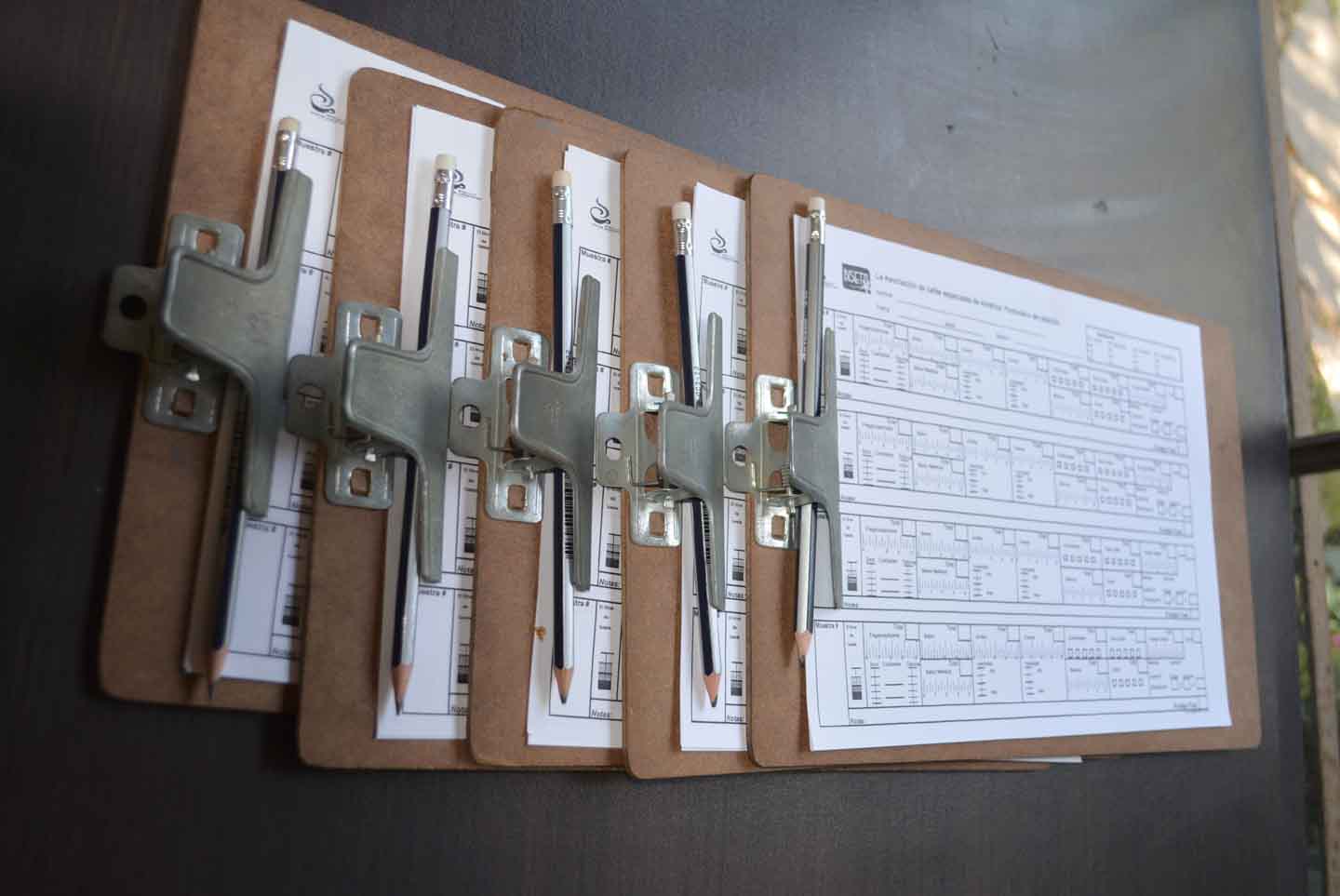
Six samples were brought to the table, all will be tasted “blind,” so as not to be influenced by knowing which coffee is which. This is very important, as it allows one to focus on each coffee without any personal influences. Many of these producers are friends as well, and while we love ’em and their coffee, we are looking for the best quality for our customers, so we have to eliminate any conflicts in the process.
Each coffee is roasted very carefully & precisely as to have a consistent roast for cupping. We want a light roast that preserves the point of origin flavors & allows us to give a fair, consistent evaluation. We use exacting SCAA cupping standards for the exact color of the roasted beans.
As the stacks of coffee cups (5 for each coffee,) each laden with a small sample are brought in, water is heating in another room for the next steps. Only pure, fresh water is used in order to eliminate any foreign flavors, such as chlorine, minerals etc. Each utensil can only be washed in hot water, as to avoid any contamination by detergent.
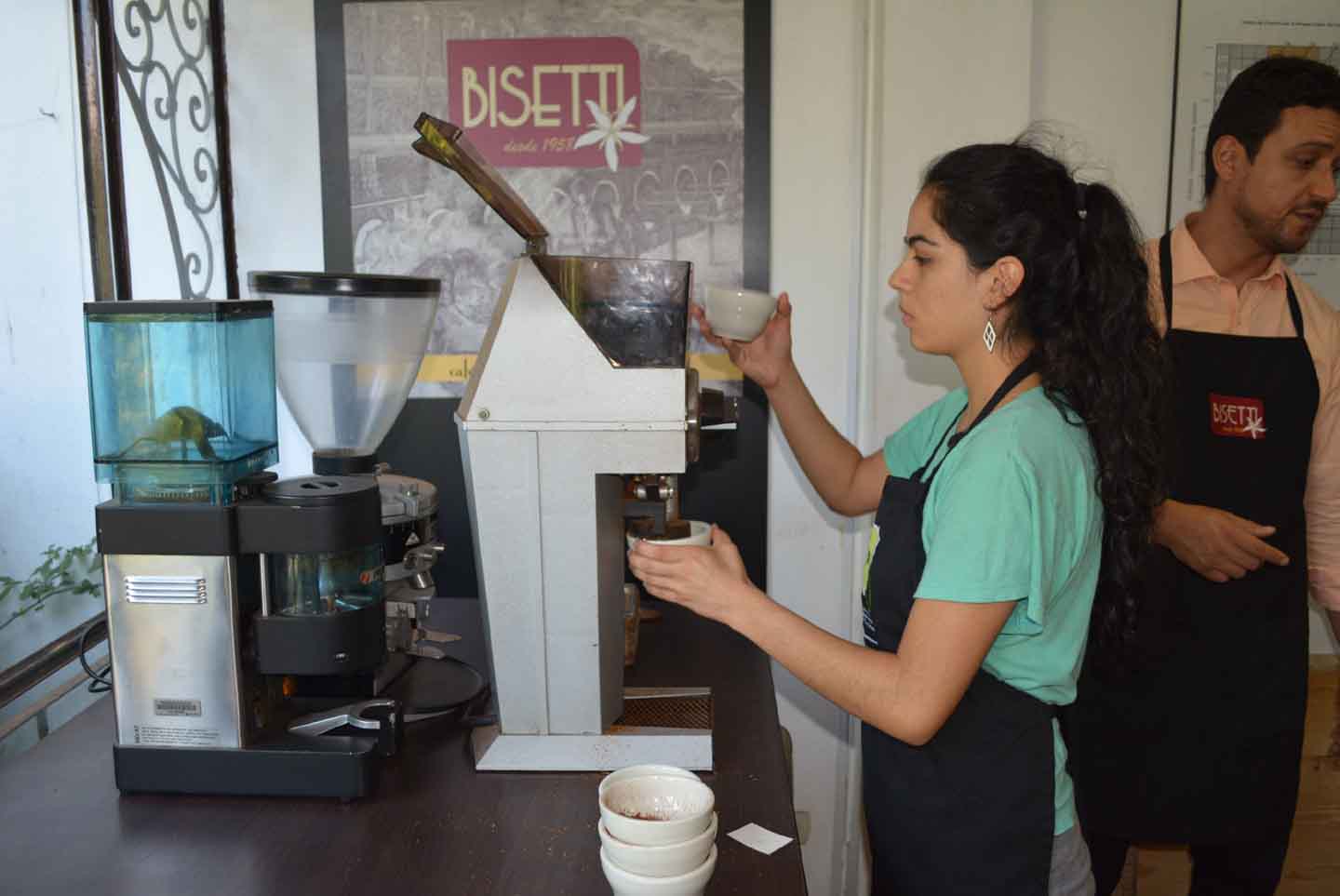
Each sample is ground, and each stack of cups is returned to the table, where all of us (5 cuppers today) will carefully smell each sample, looking for aroma characteristics that herald good coffee. The dry aroma is very important, as along with the aromas created when the coffee is infused with water play an important part in determining overall quality.
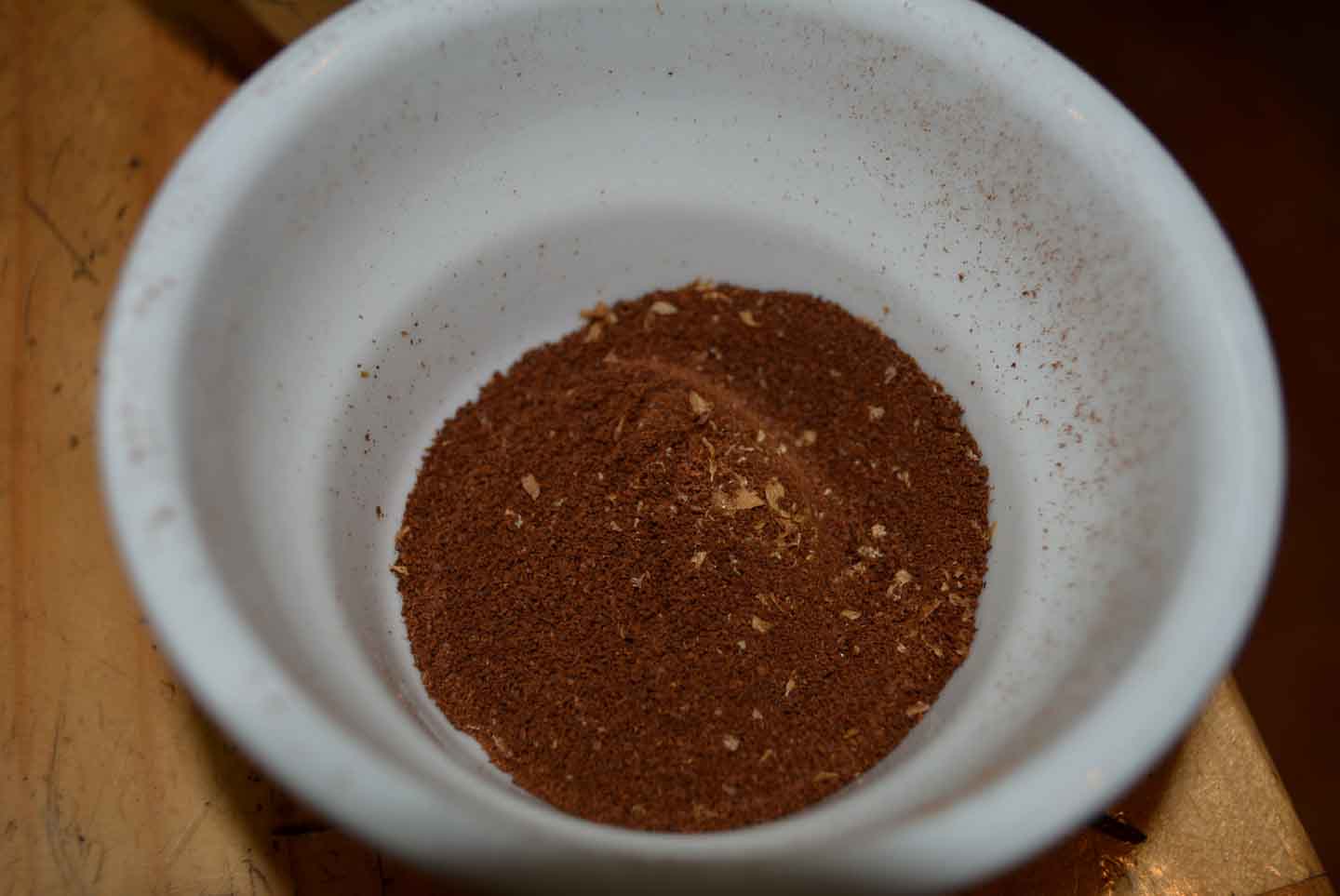
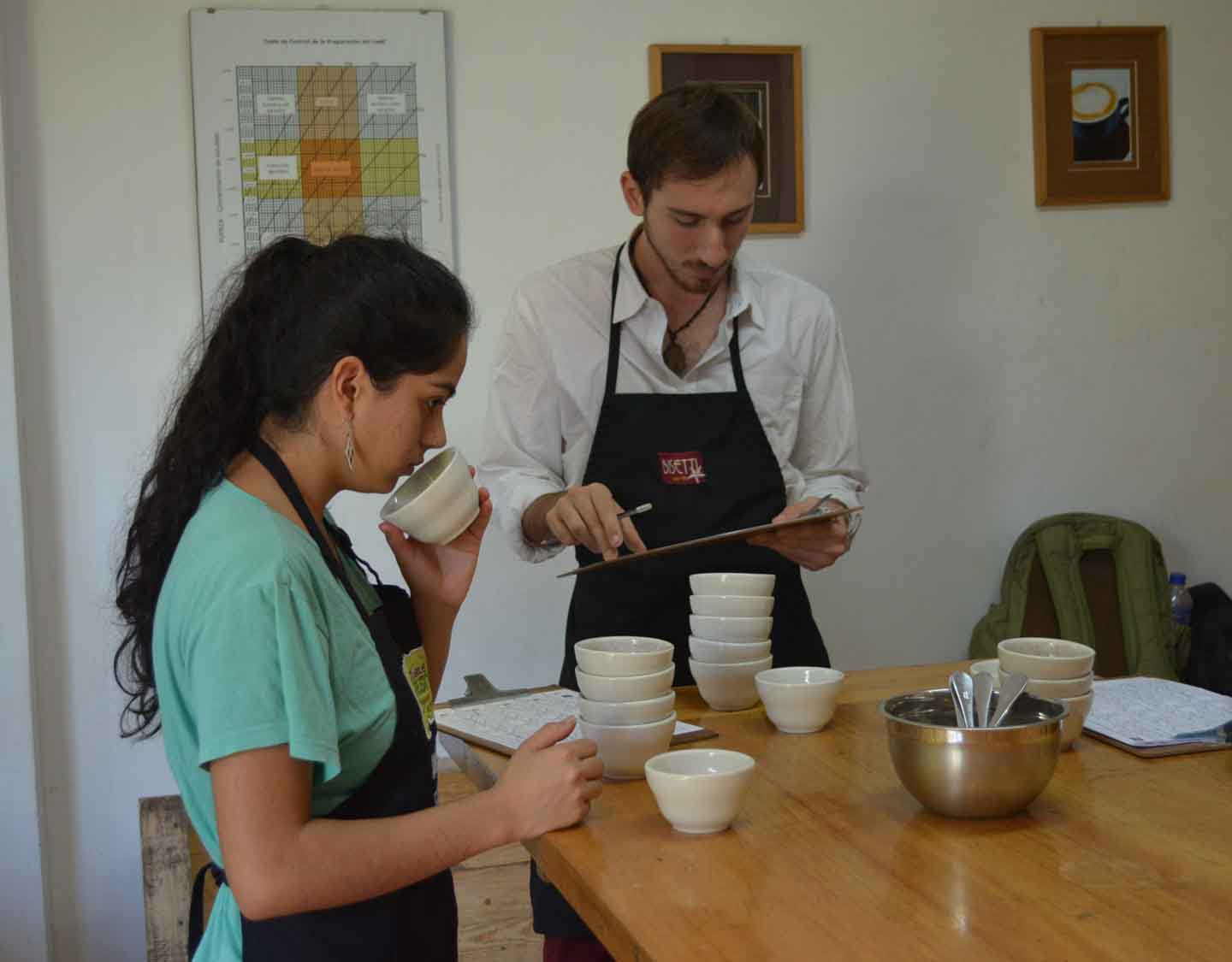
After carefully savoring and making notes on the dry aromas of each sample, we’re ready to begin adding water to each sample, and compare aromas with water infused samples. Each sample is placed in a row, and we now have 36 samples (6 for each coffee sample,) and we’re ready to begin to add the water.
The water temperature is measured, and each sample is filled to the brim of the cupping cup, and the bowls for the spoons are filled with water, as well as an additional bowl for rinsing the spoons between samples. We then await for the proper infusion time to pass.
What we’re looking for in these coffees are the aromas that make a particular coffee exceptional, more than just flavor, the subtleties of each coffee can present a wide canvas of possible aromas such as almonds, chocolate, berries, citrus fruits, flowers, and even cinnamon or pepper.
The expert cupper has refined their sense of smell to detect things that most of us might never notice, but these aromas are very important to coffee quality in the cup and the overall sensorial experience with enjoying a fine specialty coffee. Olfaction as well as taste contribute to overall flavor.

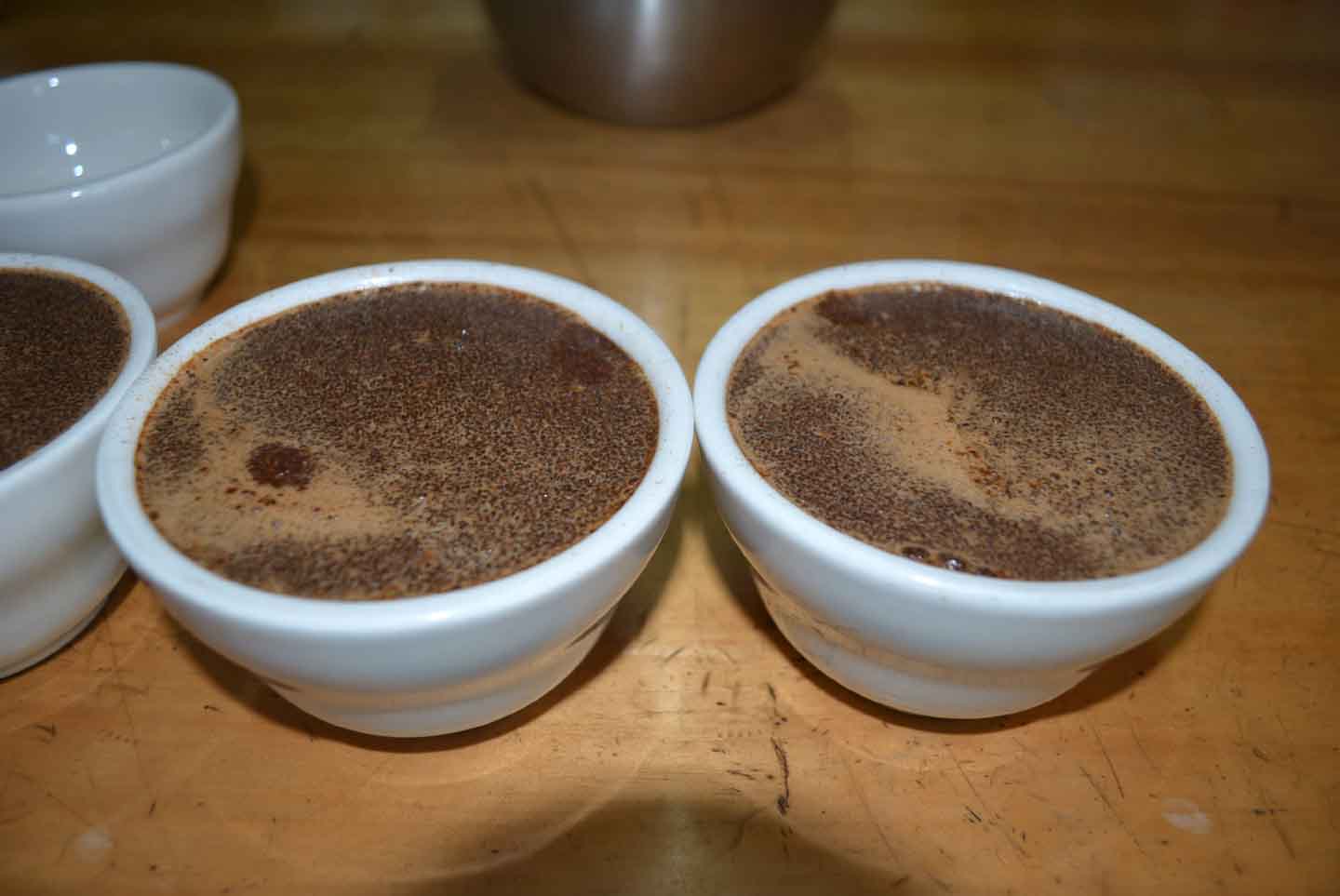
We next break the crust carefully with a spoon, and savor the resulting aromas, noting whatever specific “tones” and sensorial impressions that we receive. We record our overall aroma impressions to our cupping forms and give a score. The maximum score is 10, but typically each category will yield a score of between 7.5 to 8.5 depending on quality observed.
We find some coffees will have wonderful high scoring aromas, and then disappoint in the cup and vice versa. Some with less distinguished aromas will taste delicious in the cup. We want an overall picture.

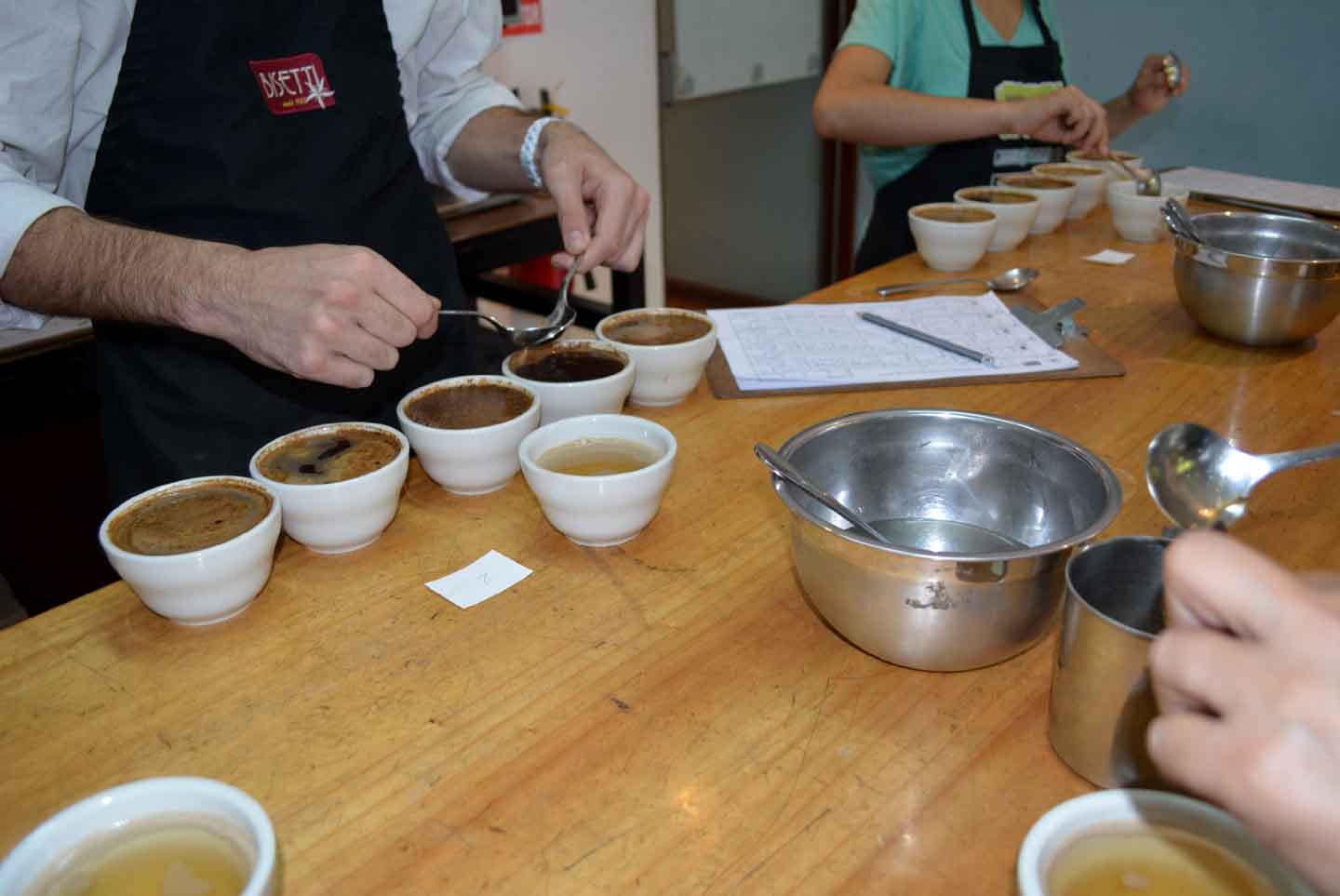
We then begin to sample each individual cup, noting flavors & taints if any. Cup by cup, we repeat the process as the coffee cools, first focusing on flavor, then on acidity, balance, and coffee body in the cup. Each coffee is evaluated and scored.
During the cupping process, we “slurp” the coffee in small quantities in order to spread the flavor equally in the palate. After each taste, remaining coffee is spit into a metal cup, so we can not only evaluate, but don’t end up overdosing on caffeine 🙂
We round the table several times, retesting here and there to be sure of our findings, and afterwards we find out which coffees we determined to be best. To our pride and surprise, the Curibamba samples this year are scoring quite well, however another coffee that we had high hopes for was very good, but not particularly exceptional.
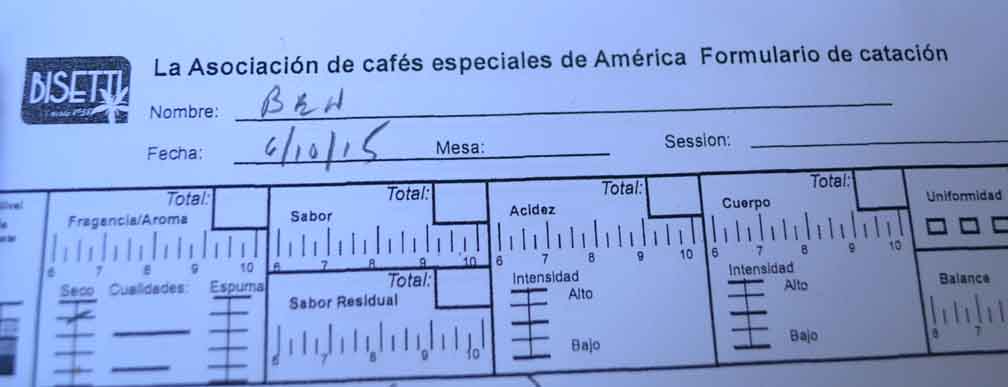

We sampled 16 coffees, in 80 cups during three separate cuppings. Between cuppings we drank pure water in order to cleanse the palate. We compared our observations, and tried to determine the absolute best from each table. The first two were relatively easy, but the third table had all good coffees, so determining the best was debatable & we all took a moment to share our thoughts.
A fun experience, and we found some great coffees….
©2015 Ben Gangloff
You might also like:
Peru Ranked Third for Adventure Tourism, Here’s Why
Why the Peruvian Economy Matters to the World

Did you enjoy this page? Have questions? Would like information on something to be posted here? Please drop us a line, or sign up for our email list in the box to the right.
